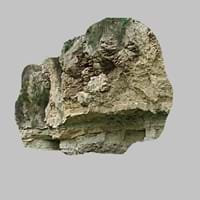Definition
Obsidian is a naturally occurring volcanic glass formed as an extrusive igneous rock. It is produced when felsic lava extruded from a volcano cools rapidly with minimum crystal growth
A water-soluble mineral sediment resulting from concentration and crystallization by evaporation from an aqueous solution
Discoverer
Obsius
Usiglio
Etymology
From Latin obsidianus, misprint of Obsianus (lapis) (stone) of Obsius
From a sediment left after the evaporation
Class
Igneous Rocks
Sedimentary Rocks
Sub-Class
Durable Rock, Medium Hardness Rock
Durable Rock, Soft Rock
Group
Volcanic
Not Applicable
Other Categories
Opaque Rock
Coarse Grained Rock, Fine Grained Rock, Medium Grained Rock, Opaque Rock
Color
Black, Blue, Brown, Green, Orange, Red, Tan, Yellow
Colourless, Green, Grey, Silver, White
Durability
Durable
Durable
Appearance
Shiny
Glassy, Vesicular and Foilated
Interior Uses
Decorative Aggregates, Interior Decoration
Decorative Aggregates, Entryways, Flooring, Homes, Interior Decoration
Exterior Uses
Garden Decoration
As Building Stone, As Facing Stone, Garden Decoration, Paving Stone
Other Architectural Uses
Not Yet Used
Curbing
Construction Industry
Arrowheads, Cutting Tool, Knives, Scrapers, Spear Points
As a Flux in the Production of Steel and Pig Iron, As a Sintering Agent in Steel Industry to process Iron Ore, As Dimension Stone, Cement Manufacture, for Road Aggregate, Making natural cement, Manufacture of Magnesium and Dolomite Refractories
Medical Industry
Surgery
Taken as a Supplement for Calcium or Magnesium
Antiquity Uses
Artifacts, Jewellery
Artifacts
Commercial Uses
Creating Artwork, Mirror, Used in aquariums
Used in the manufacture of Ceramic Powder, Used in the preparation of Sulfuric Acid and Silicon Diborite
Types
Fireworks Obsidian, Mahogany, Sheen Obsidian, Snowflake obsidian and Velvet Peacock Obsidian
Not Available
Features
Blocks negativity, Helps to protect against depression
Generally rough to touch, Splintery, Veined
Archaeological Significance
Monuments
Not Yet Used
Not Yet Used
Famous Monuments
Not Applicable
Not Applicable
Sculpture
Not Yet Used
Not Yet Used
Famous Sculptures
Not Applicable
Not Applicable
Figurines
Not Yet Used
Not Yet Used
Formation
When the lava is released from volcano, it undergoes a very rapid cooling which freezes the mechanisms of crystallization. The result is a volcanic glass with a uniform smooth texture.
Evaporite is water-soluble mineral sediment which forms from concentration and crystallization by evaporation from an aqueous solution.
Mineral Content
Not Available
Calcite, Cancrinite, Gypsum, Kyanite, Magnetite
Compound Content
Aluminium Oxide, CaO, Iron(III) Oxide, FeO, Potassium Oxide, MgO, MnO, Sodium Oxide, Phosphorus Pentoxide, Silicon Dioxide, Titanium Dioxide
CaMg(CO3)2, CaO, Calcium Sulfate, KCl, MgO, NaCl
Types of Metamorphism
Burial Metamorphism, Cataclastic Metamorphism, Contact Metamorphism
Burial Metamorphism, Cataclastic Metamorphism, Contact Metamorphism, Impact Metamorphism, Regional Metamorphism
Types of Weathering
Biological Weathering, Chemical Weathering, Mechanical Weathering
Not Applicable
Types of Erosion
Chemical Erosion, Coastal Erosion, Glacier Erosion
Not Applicable
Grain Size
Not Applicable
Medium to Fine Coarse Grained
Fracture
Conchoidal
Conchoidal
Porosity
Very Less Porous
Less Porous
Luster
Vitreous
Subvitreous to Dull
Cleavage
Non-Existent
Perfect
Toughness
Not Available
Not Available
Specific Gravity
2.6-2.7
2.86-2.99
Transparency
Translucent
Translucent
Density
2.6 g/cm3
2.8-2.9 g/cm3
Resistance
Heat Resistant, Impact Resistant
Heat Resistant, Pressure Resistant
Deposits in Eastern Continents
Asia
Afghanistan, Indonesia, Japan, Russia
Not Available
Africa
Kenya
Not Available
Europe
Greece, Hungary, Iceland, Italy, Turkey
United Kingdom
Others
Not Yet Found
Not Yet Found
Deposits in Western Continents
North America
Canada, Mexico, USA
USA
South America
Argentina, Chile, Ecuador, Peru
Colombia, Paraguay
Deposits in Oceania Continent
Australia
New Zealand
Central Australia, Western Australia
Obsidian vs Evaporite Characteristics
Though some rocks look identical, they have certain characteristics which distinguish them from others. Characteristics of rocks include texture, appearance, color, fracture, streak, hardness etc. Obsidian vs Evaporite characteristics assist us to distinguish and recognize rocks. Also you can check about Properties of Obsidian and Properties of Evaporite. Learn more about Obsidian vs Evaporite in the next section. The interior uses of Obsidian include Decorative aggregates and Interior decoration whereas the interior uses of Evaporite include Decorative aggregates, Entryways, Flooring, Homes and Interior decoration. Due to some exceptional properties of Obsidian and Evaporite, they have various applications in construction industry. The uses of Obsidian in construction industry include Arrowheads, Cutting tool, Knives, Scrapers, Spear points and that of Evaporite include As a flux in the production of steel and pig iron, As a sintering agent in steel industry to process iron ore, As dimension stone, Cement manufacture, For road aggregate, Making natural cement, Manufacture of magnesium and dolomite refractories.
More about Obsidian and Evaporite
Here you can know more about Obsidian and Evaporite. The life cycle of a rock consists of formation of rock, composition of rock and transformation of rock. The composition of Obsidian and Evaporite consists of mineral content and compound content. The mineral content of Obsidian is not available and mineral content of Evaporite includes Calcite, Cancrinite, Gypsum, Kyanite, Magnetite. You can also check out the list of all Igneous Rocks. When we have to compare Obsidian vs Evaporite, the texture, color and appearance plays an important role in determining the type of rock. Obsidian is available in black, blue, brown, green, orange, red, tan, yellow colors whereas, Evaporite is available in colourless, green, grey, silver, white colors. Appearance of Obsidian is Shiny and that of Evaporite is Glassy, Vesicular and Foilated. Properties of rock is another aspect for Obsidian vs Evaporite. The hardness of Obsidian is 5-5.5 and that of Evaporite is 2-3. The types of Obsidian are Fireworks Obsidian, Mahogany, Sheen Obsidian, Snowflake obsidian and Velvet Peacock Obsidian whereas types of Evaporite are Not Available. Streak of rock is the color of powder produced when it is dragged across an unweathered surface. The streak of Obsidian and Evaporite is white. The specific heat capacity of Obsidian is 0.92 kJ/Kg K and that of Evaporite is 0.92 kJ/Kg K. Depending on the properties like hardness, toughness, specific heat capacity, porosity etc., rocks are resistant to heat, wear, impact, etc.Obsidian is heat resistant, impact resistant whereas Evaporite is heat resistant, pressure resistant.





